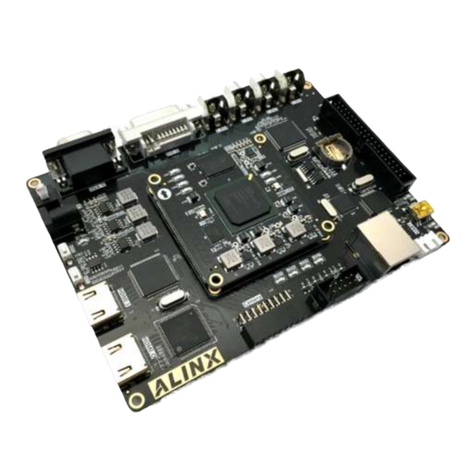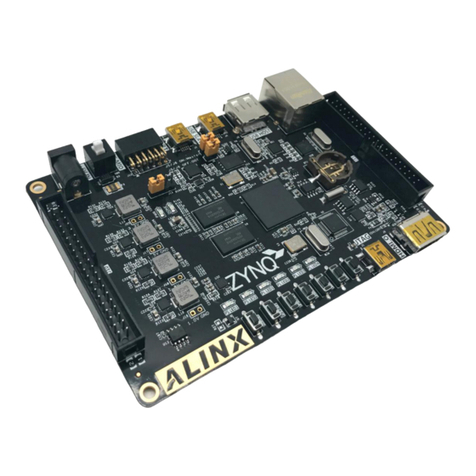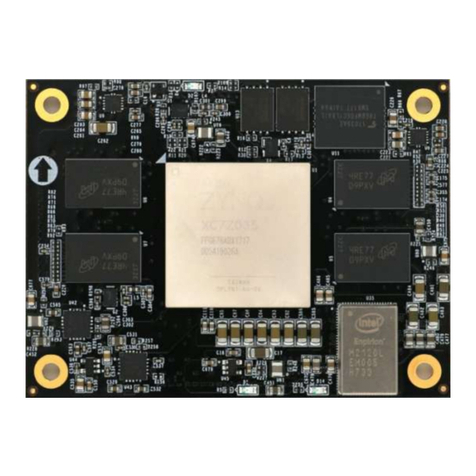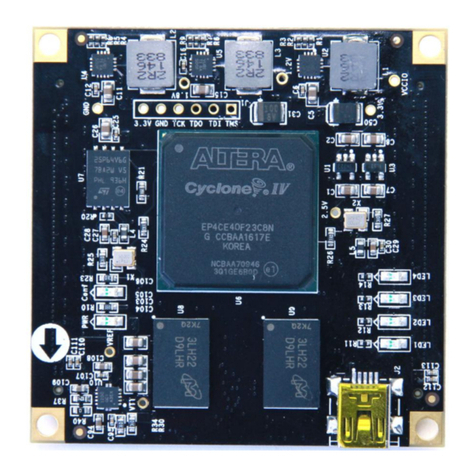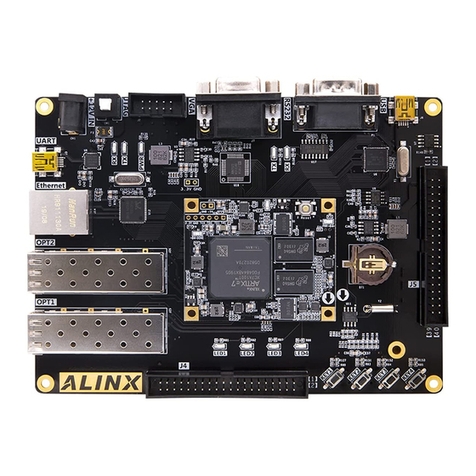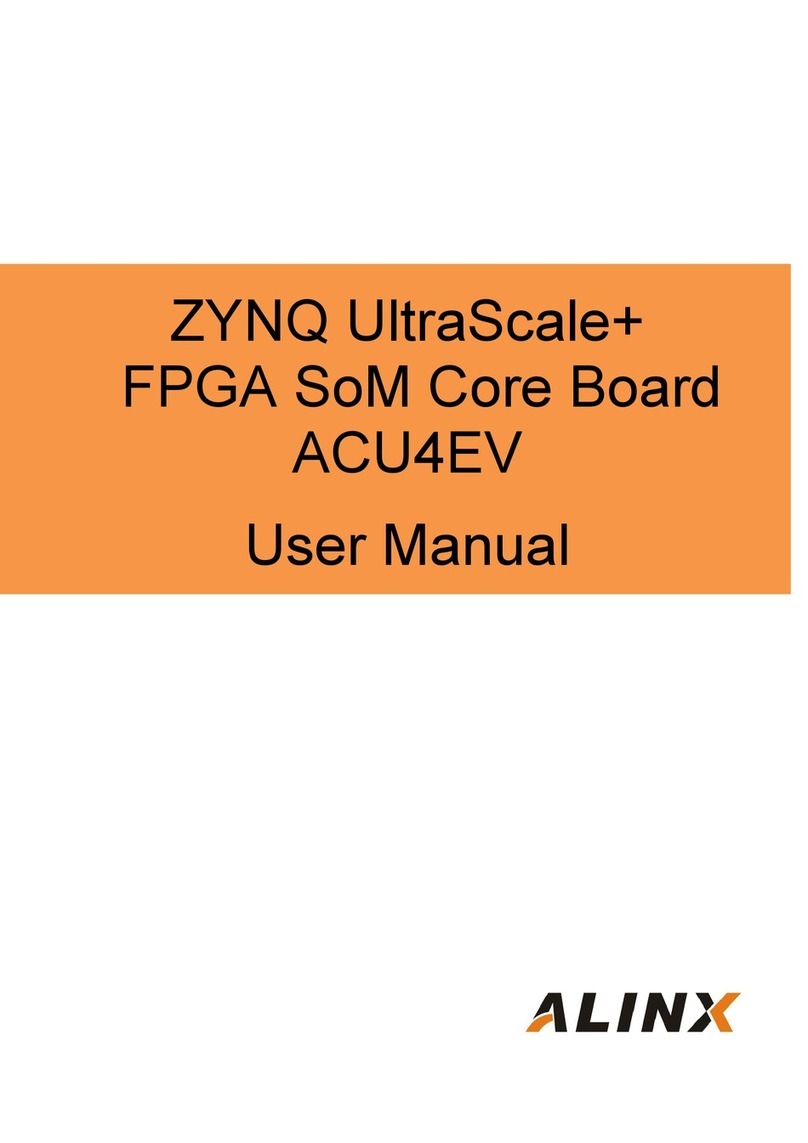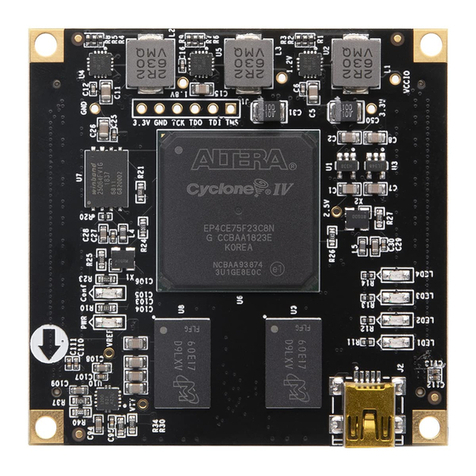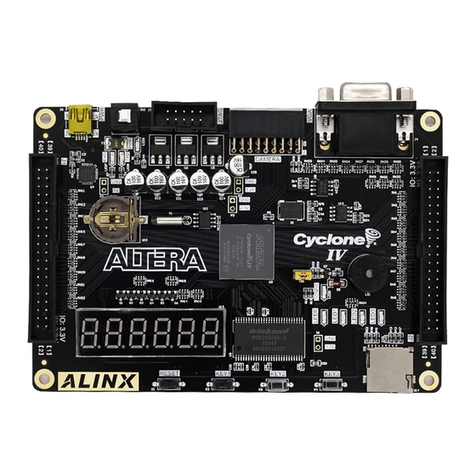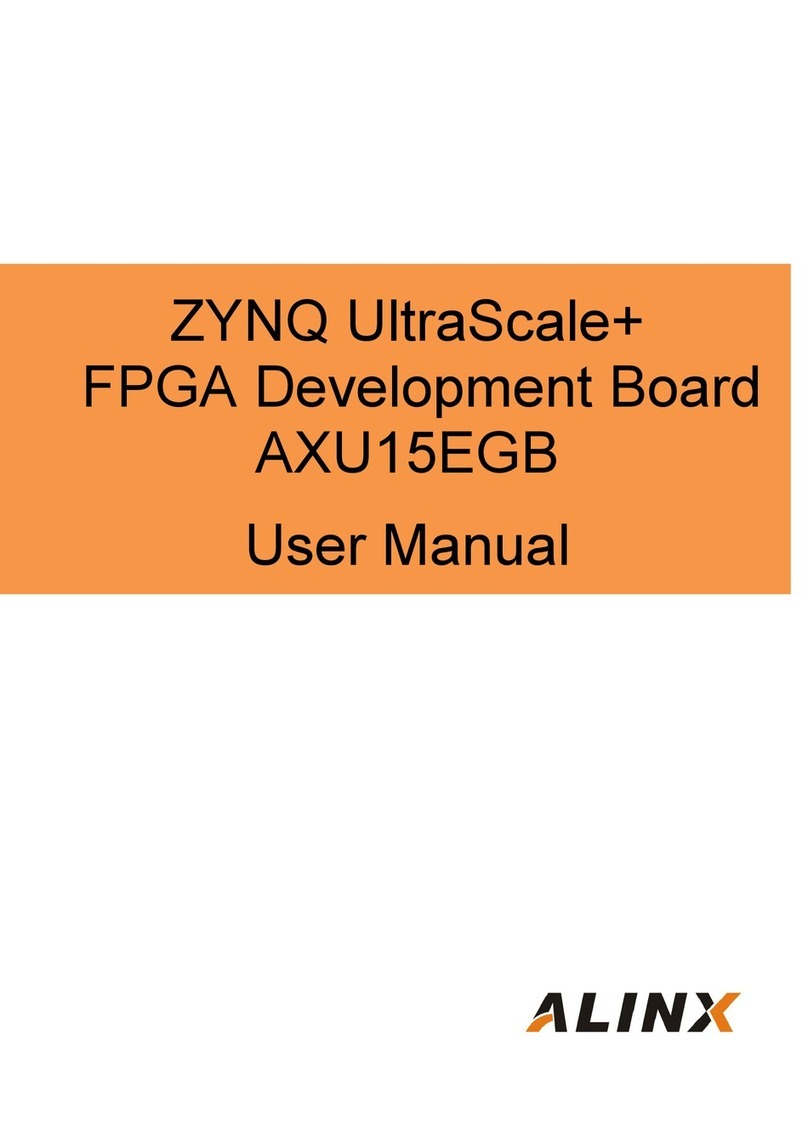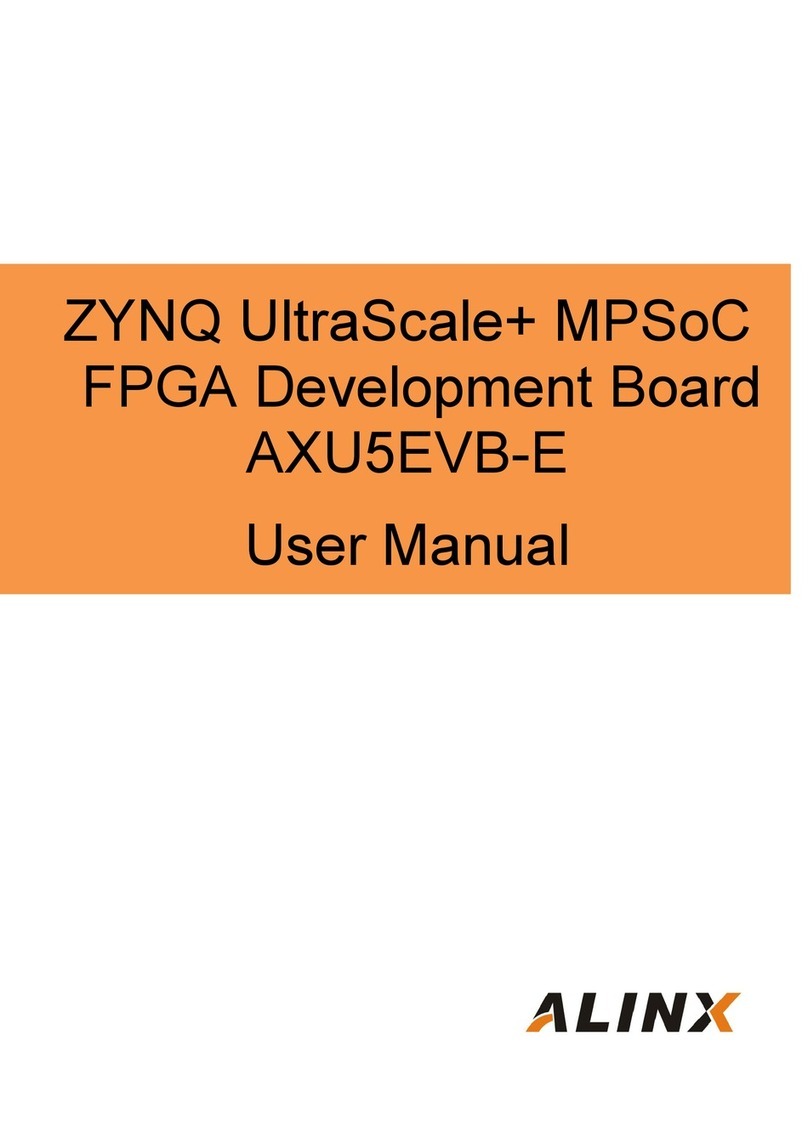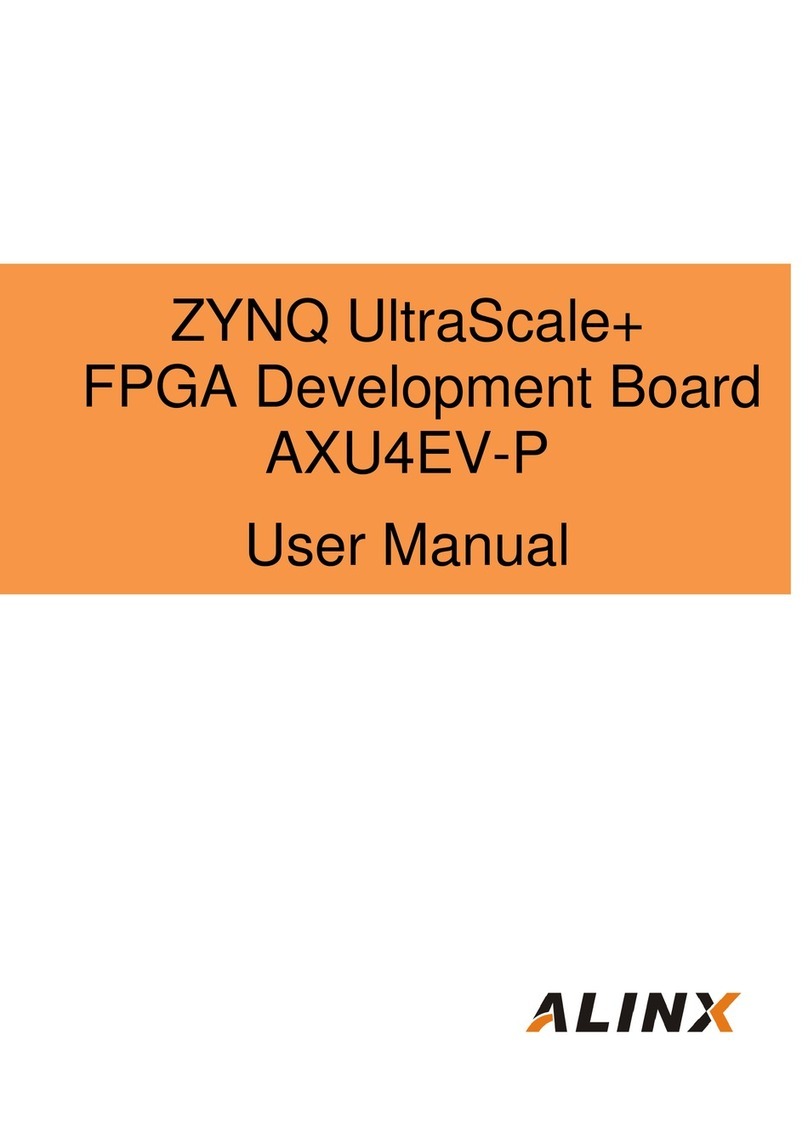
FPGA Video Processing Development Platform AV6150 User Manual
Table of Contents
Version Record.......................................................................................... 2
Part 1: FPGA Development Board Introduction......................................... 6
Part 2: Function realization........................................................................ 8
Part 2.1: Video Input............................................................................8
Part 2.2: Video Output.......................................................................11
Part 3: AC6150 core board...................................................................... 12
Part 3.1: AC6150 Core Board Introduction........................................13
Part 3.2: FPGA..................................................................................13
Part 3.3: DDR3 DRAM ......................................................................15
Part 3.4: SPI Flash ............................................................................17
Part 3.5: Crystal oscillator on Core Board .........................................19
Part 3.6: LED Light on Core Board....................................................20
Part 3.7: AV6150 Power Supply ........................................................22
Part 3.8: Powe interface on Core Board............................................24
Part 3.9: Expansion Ports..................................................................25
Part 3.10: Structure Diagram.............................................................29
Part 4: Carrier board.................................................................................30
Part 4.1: Carrier boardIntroduction....................................................30
Part 4.2: VGA Display Interface.........................................................31
Part 4.3: HDMI Output Interface........................................................33
Part 4.4: HDMI Input Interface...........................................................35
Part 4.5: Video input interface...........................................................37
Part 4.6: Gigabit Ethernet Interface...................................................39
Part 4.7: ARM Controller ...................................................................42
Part 4.8: Camera Module Interface ...................................................49
Part 4.9: Expansion Header ..............................................................50

